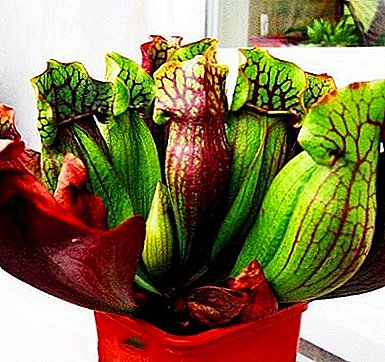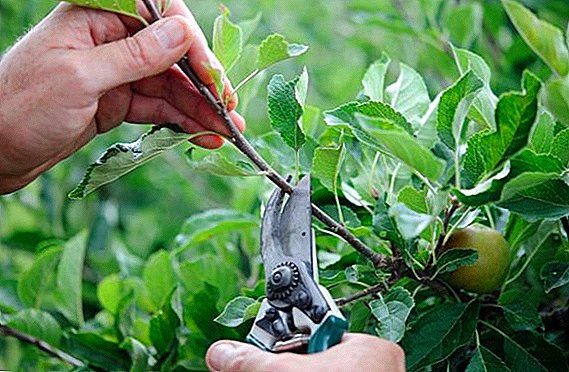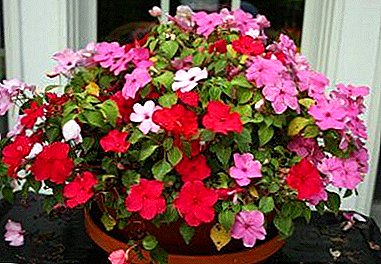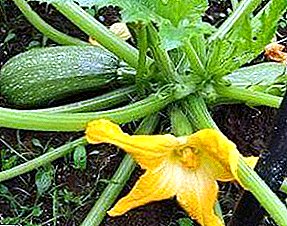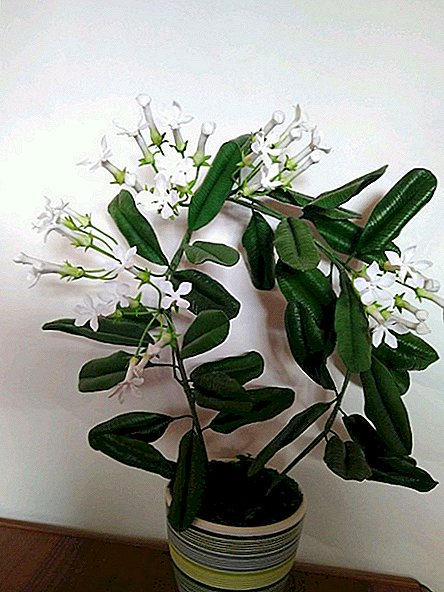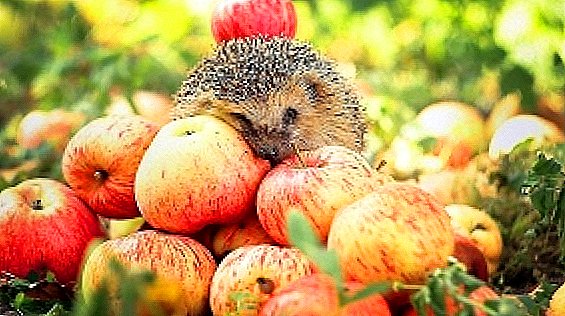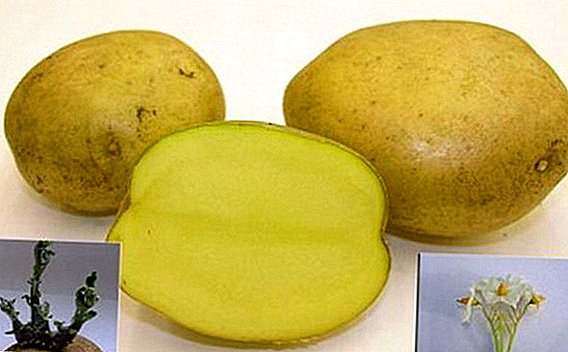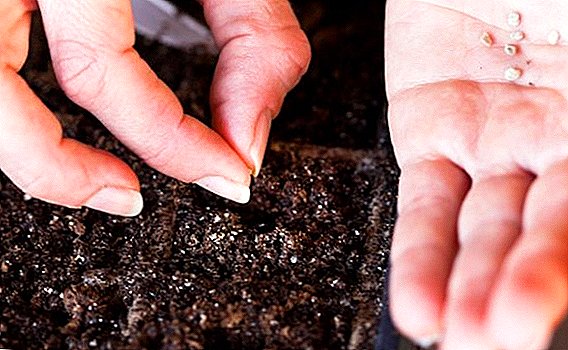 Most gardeners do not like to grow eggplants, because their seeds do not grow well enough, the seedlings are too tender, and the growing season is long. Consequently, the wrong actions will lead to the fact that as a result of the fruits you can not wait. However, as experienced agronomists assure, planting seeds of eggplants and their further cultivation does not require unnecessary efforts; the conditions should be slightly different than those of other garden residents.
Most gardeners do not like to grow eggplants, because their seeds do not grow well enough, the seedlings are too tender, and the growing season is long. Consequently, the wrong actions will lead to the fact that as a result of the fruits you can not wait. However, as experienced agronomists assure, planting seeds of eggplants and their further cultivation does not require unnecessary efforts; the conditions should be slightly different than those of other garden residents.
Growing conditions
In order to get enough fruit in the fall, it is important to consider many conditions for proper growing seedlings:
- Priming. For good cultivation, the soil must be loose, have neutral acidity and be clean. It is recommended to add vermiculite, which creates an optimal environment for nourishing the moisture of the roots of the plant. Before sowing eggplant seeds, proper planting on seedlings should be carried out after disinfecting the soil by treating it with boiling water.
- Lighting. Depending on the location of the seedlings, it is additionally highlighted. In order for the seedlings not to stretch much in the first month, it is enough to shine 60 watts of light on them for several hours in the morning and evening. Additionally, for safety net, you can put a foil panel near the seedlings, which will help to direct additional sun rays to the plants.
- Temperature. Eggplants do not tolerate drafts. The temperature drops on the roots are especially negative. To avoid this, a wooden board or foam is placed under the container with the ground.
- Top dressing. When plants look pale or drooping, no additional fertilizer is necessary. The ideal is a complex fertilizer "Nitrofoska." 3 g of this substance is diluted in 1 liter of water and watered the soil with the resulting solution. It is recommended to do this in the phase of three leaves, as well as 10 days before transplanting seedlings to a permanent place of growth.
- Watering. Moisturize the soil with slightly warm water, which is poured exclusively under the root, avoiding contact with the leaves.
Important! Watering is carried out only in the morning. To prevent water from stagnating, it is recommended to make holes in the bottom of the tank.
How to choose a time using the lunar calendar
Eggplant planting schedule for seedlings begins in February and ends in April. The landing period depends on the region of residence. When plants continue to grow in the greenhouse, it is possible to sow seeds in the first month of the year, and when transplanting in open ground it is better to wait until March.  When you have decided on the date of planting, it is recommended to find out the most suitable days for this using a special agrarian calendar. It was developed depending on the phase of growth or decrease of the Moon, the location of which affects the growth and development of the entire flora on the planet. However, for each individual plant these days are different.
When you have decided on the date of planting, it is recommended to find out the most suitable days for this using a special agrarian calendar. It was developed depending on the phase of growth or decrease of the Moon, the location of which affects the growth and development of the entire flora on the planet. However, for each individual plant these days are different.
Learn more about growing Clorind's F1 "Eggplant".Planting eggplants for seedlings, according to the lunar calendar, developed by farmers in 2016, fell on the following dates:
- February - 10, 12, 23, 26.
- March - 1, 10, 31
- April - 8, 9, 20, 21.
Did you know? Eggplants do not tolerate a picking badly, as after it stops growing for a while. Therefore, it is better not to apply such procedures to them.
Landing dates: manufacturers recommendations
Terms of planting eggplant seedlings according to the recommendations of the producers should be carried out taking into account the fact that the growing season for this plant a little longer than others. Depending on the climate, this can be done from late winter to mid spring.
Selection of planting material and care for seedlings
Today, a large number of eggplant varieties are on the market, however, in order to choose the right ones, you need to focus not only on external preferences or producer reliability, but also on other conditions that you can create for the plant. In contrast to the old varieties that were tied to the longitude of the daylight, the modern ones calmly grow at any latitude. When purchasing a hybrid, it is recommended to give preference to the first generation (F1), from such seeds grow more resistant to diseases, pests and temperature drops of the plant.
Important! Eggplant in the seedling period need a sufficiently large amount of water. To obtain a good harvest in the future, it is recommended to make up to 10 waterings at this time, however, it is important not to overmoisten it.Care for seedlings includes careful adherence to temperature regimes. It is important to simulate the daily fluctuations of natural temperatures, to provide the plant with the necessary amount of light, which should be close to the light day. All this will help grow strong seedlings.
 After the appearance of small shoots, the capacity is transferred to the light and at first it can withstand temperatures up to 16 degrees, this will help build a solid root system and grow. After the temperature is raised by approximately 10 degrees. At this time, it is also good to carry out the fertilizer procedure. It will be a ready-made composition or a solution of bird droppings - it does not matter, the main thing is to maintain proportions. 10 days before planting in the ground, the seedlings are quenched. To do this, lower the temperature to 15 degrees.
After the appearance of small shoots, the capacity is transferred to the light and at first it can withstand temperatures up to 16 degrees, this will help build a solid root system and grow. After the temperature is raised by approximately 10 degrees. At this time, it is also good to carry out the fertilizer procedure. It will be a ready-made composition or a solution of bird droppings - it does not matter, the main thing is to maintain proportions. 10 days before planting in the ground, the seedlings are quenched. To do this, lower the temperature to 15 degrees.Check out the rules of care and other vegetables, such as okra, zucchini, kale cabbage, rokambol, cherry tomatoes.After 65 days, eggplant seedlings can be planted in open ground, while the height of the plants must be at least 25 centimeters and have 9 leaves and single buds. They are grown for 1 pc. in the hole.
Did you know? Eggplant is considered a longevity vegetable. It removes harmful cholesterol from the body, and potassium salts help the heart to work.Regardless of when the eggplant seedlings were planted in March or at other times of the year, only following the rules for caring for it can ensure a good harvest at the end of summer.


